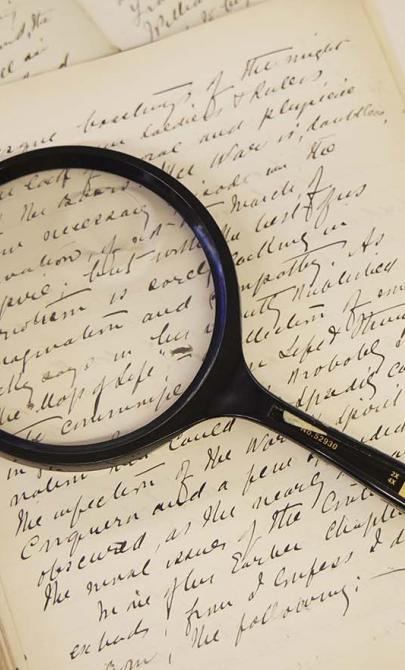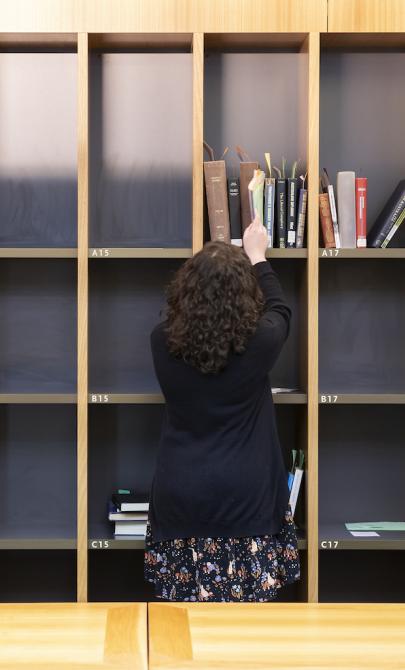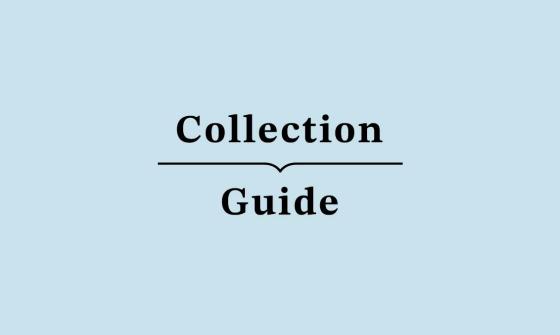McLaren-Human Collection
Key items in the collection
Overview
The McLaren-Human Collection consists of 81 Korean books, 44 Japanese books and 11 Chinese books mostly acquired by Jessie McLaren while she was living in Korea.
The subject matter of the Korean books ranges from history, literature and religion to cooking and gardening.
Korean historical and literary texts
Most of the works on Korean history are reprints published in the early years of the 20th century. There are 3 editions of the first comprehensive account of early Korean history, Samguk sagi, originally compiled in the 12th century. Other examples are Samguk yusa, compiled by the Buddhist monk Iryŏn in the 13th century, and Tongguk t’onggam, a condensed history of China first published in 1484. There is an 1845 edition of Tonggyŏng chapki, the history of the ancient capital of Kyŏngju, which McLaren translated into English.
Among the many literary works in the collection, there is a rare 1803 edition of Kuunmong, a work of historical fiction written by Kim Man-jung in about 1687. Another early work is a 1713 edition of Tongmunsŏn, an anthology of Korean literature. Twentieth-century writers represented in the collection include the poet and novelist Yi Kwang-su and the poet, editor and historian Ch’oe Nam-sŏn.
Dictionaries and language resources
The McLaren-Human Collection contains some rare dictionaries and grammars. Two examples are:
- James Gale, Present Day English-Korean: Three Thousand Words (1924)
- Lloyd H Snyder, Handy Dictionary Note Book: Collection of Chinese Characters in Common Use (1939).
Philosophy and religious writings
Works on philosophy and religion include several Korean editions of the Analects of Confucius and other basic texts of Confucianism, such as the Great Learning. There are early editions of works by Yi Hwang, Korea's greatest neo-Confucian philosopher. Of particular interest are 2 popular guides to Confucian and Buddhist virtues, written in both Chinese and Korean. Pulsŏl taebo pumo ŭnjunggyŏng ŏnhae, published in Hamgyŏng province in 1766, is an apocryphal Buddhist sutra on the subject of filial piety. Samgang haengsilto (1729) is a popular guide to Confucian ethics, with inspiring moral tales from Chinese and Korean history.
Other Korean works in the collection include 1931 and 1939 editions of a cookbook and a 1914 reprint of the travel diary of Kim Ch’ang-ŏp. Kim was a member of the Korean mission to the imperial court at Beijing from 1712 to 1713.
Japanese and Chinese works
The 44 Japanese works are either wholly or partly in Japanese or are by Japanese authors in Western languages. Most deal with the botany of Korea or other parts of East Asia and include several titles by the Japanese Government Botanist in Korea, Nakai Takenoshin. The other Japanese titles deal with Korean culture and bibliography. The 11 Chinese books include dictionaries, textbooks, copies of Chinese classics and works on Chinese botany.
- Samguk sagi – Three Kingdoms of Korea: Goguryeo, Baekje, and Silla. Completed in 1145
- Samguk yusa – Memorabilia of the Three Kingdoms, is a 13th-century Korean historical text compiled by the Buddhist monk Iryŏn during the Goryeo dynasty
- Tongguk t’onggam – Comprehensive Mirror of the Eastern Kingdom, is a monumental Korean historical chronicle compiled in the 15th century
- Tonggyŏng chapki – Miscellaneous Records of the Eastern Capital, is a historical text compiled in 1845 by Min Chu-myŏn (閔周冕) during the Joseon dynasty
- Kuunmong – The Cloud Dream of the Nine, is one of the most celebrated works of classical Korean literature
- Tongmunsŏn – Selections of Refined Literature of Korea, is one of the most important anthologies in Korean literary history
- James S Gale, Present Day English-Korean: Three Thousand Words – a compact bilingual dictionary published in 1924 by the Christian Literature Society of Korea
- Lloyd H Snyder, Handy Dictionary Note Book: Collection of Chinese Characters in Common Use – a rare and historically significant reference work published in 1939 by the Chosŏn Christian Literature Society in modern-day Seoul during the Japanese colonial period
- James S Gale, Great Learning – English and Korean translation of one of the foundational Confucian texts, originally attributed to Zengzi, a disciple of Confucius
- Pulsŏl taebo pumo ŭnjunggyŏng ŏnhae – a vernacular Korean translation and commentary on a Buddhist scripture known as The Sutra on the Profound Kindness of Parents
- Samgang haengsil – a Confucian moral primer compiled and published in 1434 during the reign of King Sejong of the Joseon dynasty
About Jessie McLaren
Early life and education
Jessie McLaren (1883–1968), who was the daughter of Charles Reeve, a missionary in India, was born in Hobart. She grew up in Tasmania, India, Geelong and Melbourne, where she attended the Presbyterian Ladies' College and the University of Melbourne. She became a travelling secretary for the Australian Student Christian Movement.
Marriage and missionary work in Korea
In 1911, she married Charles McLaren, a Melbourne doctor, and they immediately left for Korea as missionaries of the Presbyterian Church of Victoria.
Life and teaching in Korea
They lived in Korea for 30 years. From 1911 to 1923 Charles McLaren worked at Paton Memorial Hospital in Chinju and from 1923 onwards he taught at Severance Union Medical College in Seoul. Jessie McLaren taught history and Bible studies at Ewha College.
Wartime disruption and Return to Australia
In 1941, with war imminent, Jessie and her daughter returned to Australia. Charles McLaren was imprisoned in Korea and Japan and was repatriated in 1942.
Cultural Interests and literary legacy
Jessie McLaren became interested in various aspects of Korean culture and collected many books during her years in Korea. Her daughter Rachel wrote of her mother that 'books and gardening were 2 of her major hobbies'.
During the 1920s, a long illness forced Jessie McLaren to be housebound and she used the time to immerse herself in Korean history and culture. She also improved her knowledge of Chinese and translated Chinese texts as well as Korean poetry.
She was only able to bring back a small proportion of the books to Australia in 1941.
Background to the collection
Rachel Human, the daughter of Jessie McLaren, donated the collection of Korean, Chinese and Japanese books to the Library in 1984.
The McLaren-Human Collection is housed in the Asian Collections. The Korean books have been kept together and the call numbers have the prefix 'OKM'.
The Japanese and Chinese books have been integrated into the Japanese Collection and Chinese Collection. The books contain a special bookplate featuring a gingko, a tree that featured in the McLaren gardens in both Seoul and Melbourne.
The books have been individually catalogued and there is also a finding aid published by the Library in 2007.
Rachel Human donated books, manuscripts and letters of Jessie and Charles McLaren to the Uniting Church of Australia Archives in Melbourne. She also presented books, mainly about China and Japan, to La Trobe University Library in Melbourne.
This guide was prepared using these references:
- Andrew Gosling, Jessie McLaren: An Australian in Korea, National Library of Australia News, vol 17 (11), August 2007, pp 11–14.
- Andrew Gosling (compiled), Jessie's Korea: Guide to the McLaren-Human Collection in the National Library of Australia, National Library of Australia, Canberra, 2007.
- Andrew Gosling, The Korean Collection, A National Asset, National Library of Australia News, vol 12 (5), February 2002, pp 7–10.
- Andrew Gosling, Rare books from Korea, National Library of Australia News, vol 18 (12), September 2008, pp 306.
- Esmond W New, A Doctor in Korea: The Story of Charles McLaren, MD, Australian Presbyterian Board of Missions, Sydney, 1958.




